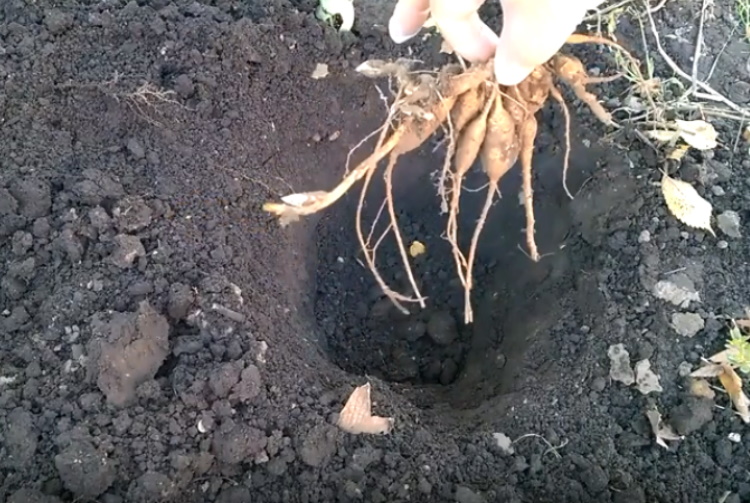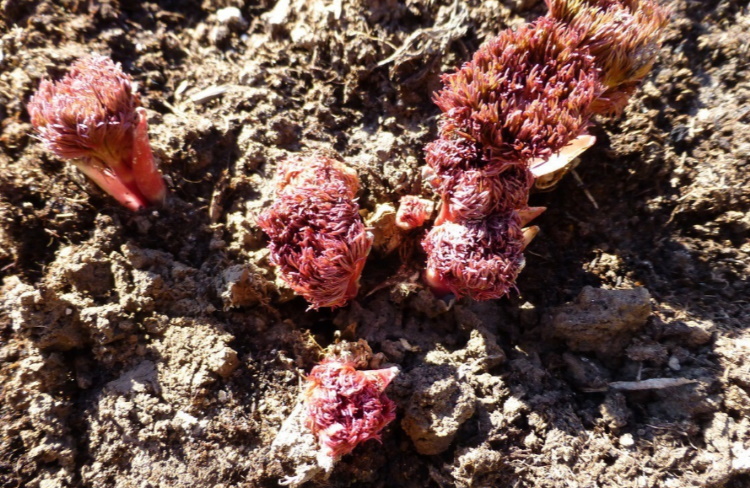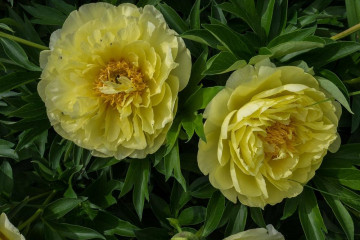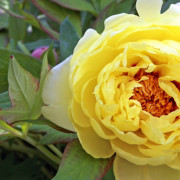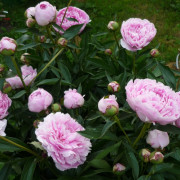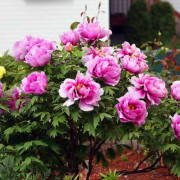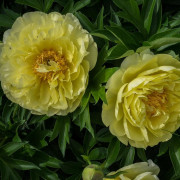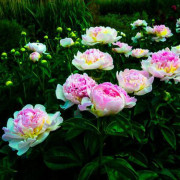Peony Rubra Plena (Paeonia Rubra Plena) - features of the variety
Content:
The Latin name of the flower Paeonia Officinalis Rubra Plena translates as Peony Medicinal Red Full. It is a close relative of the wild, narrow-leaved medicinal peonies that are found in the north of the Alps, in southern European regions, the Danube basin, Asia Minor and Armenia. In Russia, in the Volgograd region, a zone of their protection has been created. The plant has popular names - raven or azure flower.
History of creation
Even in the days of Hippocrates, the wild Paeonia Officinalis was used as a tonic, diuretic and sedative. Women's problems with unwanted pregnancies were also solved with the help of these plants. Tincture from the roots eased the fate of those suffering from gout, diseases of the skin, respiratory tract.
In the Middle Ages, the plant was called the Benedictine or Church Rose. Monks of the Order of St. Benedict was the first to collect it in the foothills of the Alps and brought it to Germany. At the same time, the first selection experiments were carried out, and a peony with a double flower shape was grown. Nowadays it is often used for crossing with the Paeonia garden species.
Description of peony thin-leaved Rubra Plena
The herbaceous peony Officinalis Rubra Plena is a very early hybrid created in 1954 in America by the manufacturer Glasscock. The plant blooms in May-June and blooms for 10-15 days. For the winter, the surface parts of the peony die off. The roots of the culture are covered with pineal growths, they penetrate deep into the soil, so they do not freeze out in winter and do not require additional shelter.
At the top of the peduncle, 1-2 double flowers with a diameter of 12-14 cm are formed.At the same time, up to 20 buds can bloom on the bush. The bush under the weight of flowers can decay, so they tie it up. Inflorescence petals are shiny, bright, rich dark red hue.
The bush reaches a height of 80-100 cm, at least 45 cm, the crown diameter is about 85 cm. The stems are thick, erect, not branched, covered with thin dark green leaves, dissected into threadlike lobes. The appearance of the leaves resembles long soft needles. The smell of flowers is very weak.
Use in landscape design
Peony Rubra Plena is used for landscaping gardens, parks - as a specimen and in group plantings. It becomes very beautiful even before the buds appear and bloom. The flowering bush looks good in rocky gardens, next to phlox, shaved, arabis and tulips. The plant is suitable for cutting, bouquets from it retain their freshness for a very long time.
Growing a flower
The rhizomes of Paeonia Officinalis Rubra Plena tolerate snowless winters and sudden temperature changes without damage, so the flower can be planted even in the northern part of the garden area. It will bloom beautifully and grow well both in the bright sun and in partial shade.
In a dense shade, flowering will be rare, but the decorativeness of the green part of the bush will improve - the plant will increase the thickness of the stems and the density of the leaves.In this regard, Officinalis Rubra Plena peonies are not planted under tall trees and spreading bushes, on the northwest side of fences and houses.
In wetlands, the decorative Peony Peony is planted in raised areas of the garden, where the root system of the flower cannot get wet from excess moisture. The soil should be loose and fertile. Rubra Plena peonies are suitable for neutral and slightly alkaline soils. If it is necessary to lower the acid level of the soil, the earth is lime.
Landing in open ground
In one place, wild crows can grow up to 30 years. Decorative flowers need more frequent transplants, which are done at least once every 10 years. The division of the rhizome into cuttings and the planting of the divisions into new places is best done in late August - early September. Spring planting is very rare, plants planted in spring do not take root well.
Pit preparation
2-3 weeks before transplanting, a planting hole is pulled out on the site with a size of 60x60 cm and a depth of 40 cm.On clay soils that retain water, the hole should be deeper, because a thick drainage layer will have to be laid on the bottom, which will prevent root decay.
The necessary substrate is prepared taking into account the composition and level of soil fertility at the planting site. On depleted soils, the pit is filled with a mixture of sod land, high moor peat (grass peat is not used - it has an increased level of acidity), ash, sand, bone meal and 2-3 tablespoons of granulated Superphosphate.
Splitting the bush
Bushes that have reached 5 years of age are best separated and rooted. Before starting work, all peony stems are tied and cut in half. The bush is dug in from all sides at a distance of 25-30 cm from the stems. The plant is carefully removed from the ground, the soil is shaken off from the roots, the rest of the earth is washed off.
After drying, the bush is divided in such a way that at least 3 growth points remain on each division. The cut points are treated with crushed activated carbon.
Landing
The day before planting, the prepared pit is spilled with water with the addition of a fungicidal biological product. When the soil settles, a layer of dry soil mixture is poured into it. A piece of rhizome is deepened to the uppermost eye. It must remain level with the ground.
The pit is filled up, watered with plain water. When the water is absorbed, add the earth to the edge of the pit, tamping it down a little. Pegs are dug in around the bush, tied with twine, marking the boundaries of the planting pit. This technique will not allow you to accidentally trample the root of a peony.
Before the onset of cold weather, a layer of wood ash is poured onto the bush. It, together with sedimentary waters, will penetrate to the roots of the peony during the winter. Then a layer of fallen leaves is poured. Rubra Plena peonies are not covered with coniferous spruce branches, since the needles increase the acidity of the soil.
Paeonia care
Peonies planted in fertile soil begin to feed after 2-3 years of active flowering:
- In the fall, 2 tablespoons are scattered over the soil surface in the root circle. Superphosphate.
- In the spring, barely hatched stems are watered with nitrogen fertilizers.
- Before flowering, plants need complex feeding, which is Nitroammofoska with the NPK formula 15:15:15.
Peonies are watered as the soil dries up, overflows are unacceptable. After the end of flowering, the plants begin to prepare for the period of winter dormancy, slow down their development, so they are watered only in very hot weather.
Top dressing and watering change the acid composition of the soil, and this can affect the flowering activity. To maintain a slightly alkaline soil reaction, peonies are periodically watered with a solution of wood ash.
Pruning, preparing for winter
By the end of summer, the stems of the plant begin to wilt, change their color. As they dry, they are cut off and sent for disposal.
In the south and in central Russia, Rubr Plen's peonies do not freeze out. But in recent years, the weather has been unpredictable. To protect against abnormal cold, a layer of mulch is laid on the soil surface above the rhizome of the flower.
Protection from pests and diseases
Peony buds and blossoming inflorescences can be affected by aphids carried by ants. You can destroy it with systemic insecticides.
Peonies Officinalis Rubra Plena have strong immunity, so they practically do not get sick. But their root system can suffer from extremely abundant watering or from fungal-infected soil that has not been treated with antifungal fungicides before planting. When the roots decay, they make an urgent transplant of the bush to a new, rot-treated place. The diseased parts of the root system are removed.
A medicinal peony planted in the garden may help someone overcome the disease, but this should be done carefully, after consulting with specialists. But you can admire this flower without any fear - it is worthy of admiration and care.



